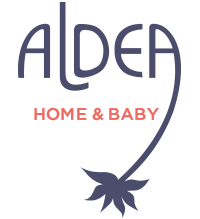
Pieces by G?dar Furniture are a mixture of local and designer inspired origins that result in creative, striking showcase pieces for interior residences. Designer, Justin G?dar, where the company name is evidently a derivative of, looked to the Sutro Tower of San Francisco to literally reproduce in model scale coat rack; while the transition from Hans Wegner's PP503, Eames' House of Cards George Nakashima's tables supported the creations of G?dar’s Thick Chair, Grow shelves and Fake Slab coffee table. While the Sutro Tower Coat Rack shares direct correlations with the actual structure,, the sources for the other furniture pieces are not as evident to even the trained eye for they are not meant to be copies or visible imprints of past works.
While inspiration has brought the ideas into the making, the production process is also relevant to the success of the unique furniture pieces. Breaking the envelope to produce visionary works comes with quality and careful study. Prototypes are created to build a locally small manufacturing of well constructed pieces. Customers who buy G?dar Furniture are sure to purchase a product that is opposed to mass production and in favor of quality control, made in San Francisco.
The achievement of the Sutro Tower Coat Rack, as seen in sale popularity, is also due to it’s clever process. The way the piece is put together and taken apart is an aspect of creativity that only adds value to the overall concept. The rack comes with an effortless assembly kit made of a clever plywood installation ‘hammer’ keystone, giving clients that i-can-build-this attitude which combines simple transportation and consumer participation. Once the rack is bought in store, it can be folded and moved, no large inconvenient packaging required; just a simple lifting of the upper triangular structure to allow for the dis-assembly of the remaining pieces.
G?dar Furniture is available at Aldea Home where clients can witness firsthand the creativity, intelligence and quality of Justin’s designs and production or visit the Aldea website to discover the images and access to the pieces through on-line purchasing.

INTERVIEW
1. What were your inspirations for creating the line?
Inspiration can come from anywhere, but many of my designs were inspired by existing designs, at least as a starting point. In the case of the Sutro Tower Coat Rack, that design was clearly Sutro Tower. I thought its design would work well as a coat rack, though my first scale model could barely stand up on its own. I had to completely change all aspects of the scale model to turn it into a product that would hang coats and look good as furniture. In the end, it works great if you need a place to hang your coats or if you just want to own a sculpture inspired by Sutro Tower.
Other examples of existing designs inspiring my designs includes Hans Wegner's PP503 chair inspiring my Thick Chair, Eames' House of Cards inspiring my Grow shelves or George Nakashima's tables inspiring my Fake Slab coffee table. But even the well trained eye would be hard pressed to recognize these inspirations. I'm not interested in ripping off someone's designs. I see design as an ongoing conversation I'd like to help advance, rather than recap what has already been said.
2. What is the most rewarding aspect of what you do?
Selling my products is the most rewarding part of what I do, but not for the obvious reason. My designs push the envelope and I hopefully can communicate my vision through the end product. Though I can generally get some praise from friends and the internets, purchasing my products says "I get it, I'll lay down some money to prove it and I'll let it occupy some of the limited space in my home for a long time."
3. What is the most challenging aspect?
Though research and development is one of the most rewarding aspects of my business, it is also the most challenging. I generally start out with a sliver of an idea and usually develop it until I have a functioning prototype, sometimes over the span of many years. I'll often need to learn about new materials, tools and processes along the way. It takes a tremendous amount of time, money and focus, but there's no guarantee it will lead to a product I'll ultimately sell.
4. Why should a customer purchase your products?
Customers should buy my products because they like them and there is nothing else quite like them. If that's not enough, they can be comforted knowing that my products were made responsibly in small quantities with the highest standards by the same fellow who designed them right here in San Francisco.
5. How did you come up with the concept of your "hammer" beer can?
The Sutro Tower Coat Rack has a keystone. The small, solid triangle in the middle holds everything together. As it is pressed into its final resting spot, the legs snap inward and lock it in place.
I was slightly concerned that someone's fingers might get pinched during this step, so I decided to add the Beer Hammer to keep hands out of the pinch zone. It has the added benefit of making use of scrap plywood that was left over during the cutting of the coat rack parts.
I was not the first person to include a plywood can-and-hammer tool. A friend of mine, Bart Haney, included a bunny-shaped hammer that used a can of tomato soup as a weight. It was a tool used to assemble his "Neo Amish Seating" through his Super Happy Bunny brand. With his permission, I adopted the concept to fit my own needs.





